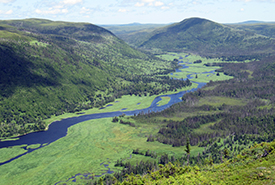Connect with nature through words: A haiku how-to

View of the Grasses Nature Reserve, Newfoundland and Labrador (Photo by NCC)
Connecting with nature can take many forms: gathering with friends and family, meditation, hiking, birdwatching and more. Some people like to explore through creative arts, such as photography, sketching and journaling. No matter how nature finds you or you find nature, you can always experience nature in a new way, including through poetry. Not sure where to start? We've got you covered.
A haiku is a very short form of Japanese poetry. The first English haiku was written in 1911 by Ezra Pond called “In a Station of the Metro.” Regardless of the language a haiku is written in, the poem must follow several key characteristics:
The content: A typical haiku is a three-line observational poem about a fleeting moment. Although a haiku can be written about anything, it is typically inspired by nature or the seasons.
The style: Most haikus are a juxtaposition of two subjects relating to one topic. For example: a large animal and a small insect or trees in the prairie and flowers by a city sidewalk. Anything that’s different, yet unexpectedly similar.
The technicalities: A haiku isn’t supposed to rhyme. It should follow a three-line format with 17 syllables arranged in a 5-7-5 pattern. You can also write haikus that are 10 to 14 syllables, with the second line being the longest.
The grammar: Good news for anyone that doesn’t like grammar: haikus tend to have little or no punctuation or capitalization.
Here's a haiku, inspired by taking a break from our screens and stepping out into nature:
Eyes seldom moving
Glued to a blue-lit screen
Bluebirds flying high




